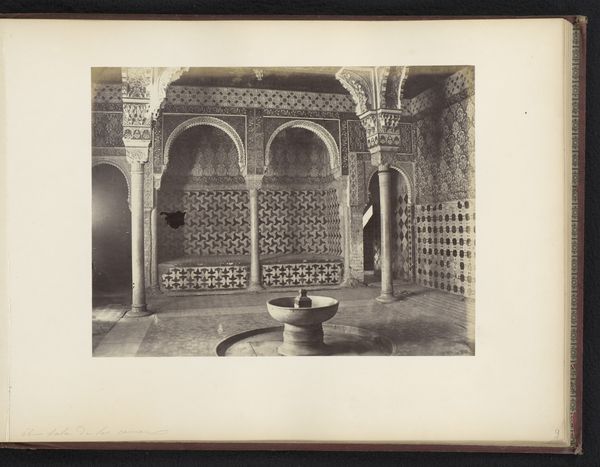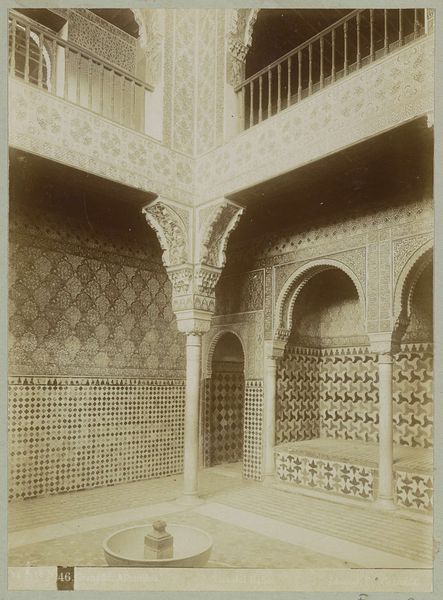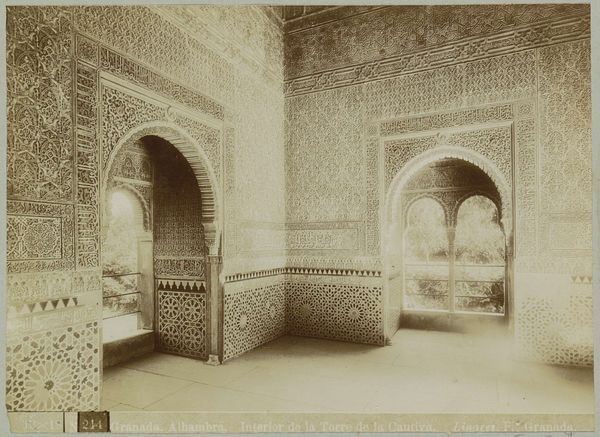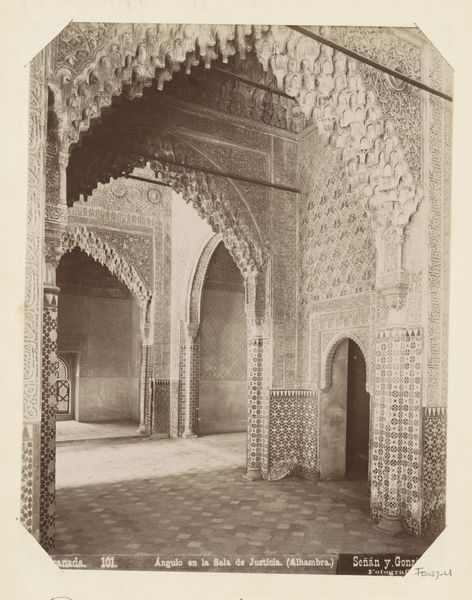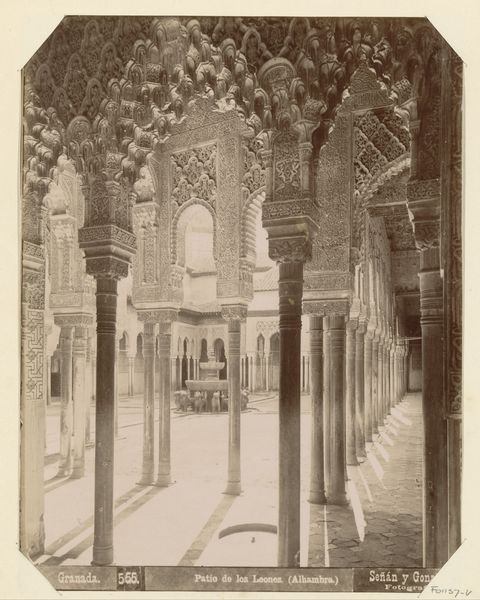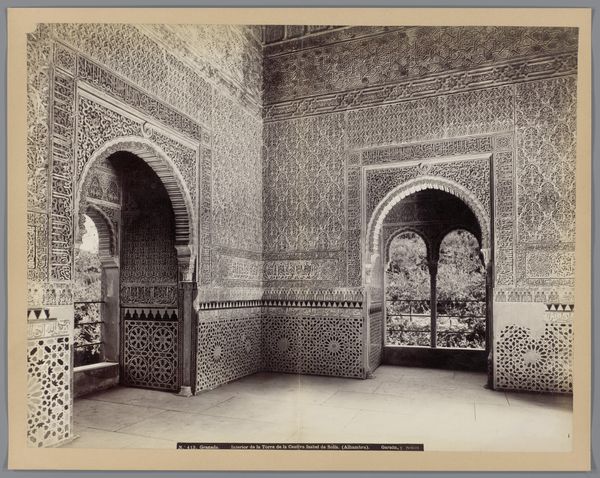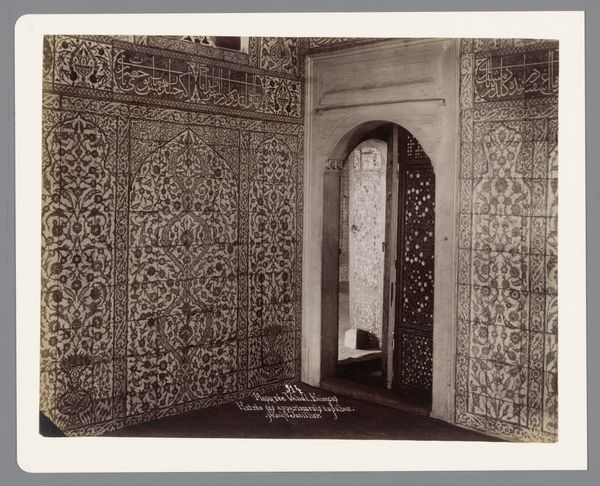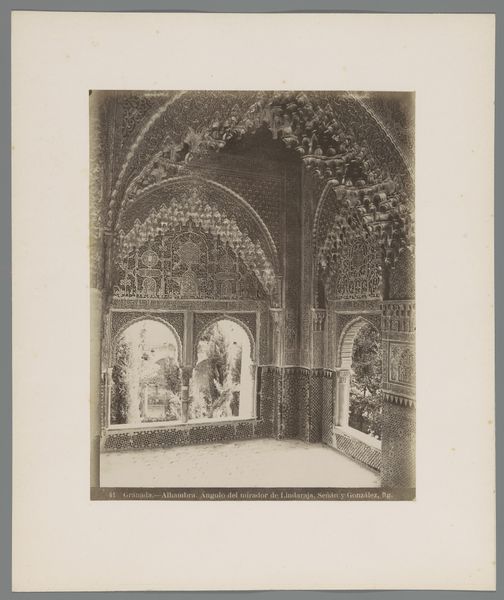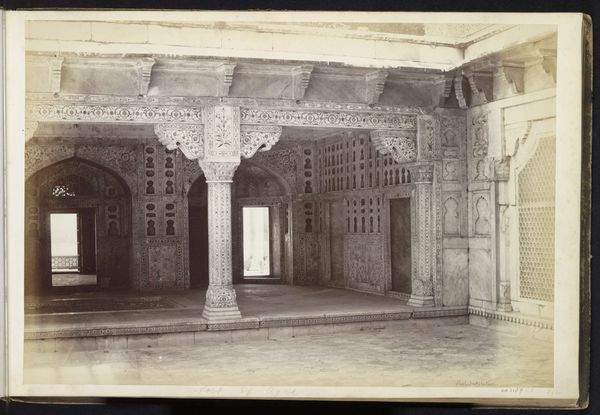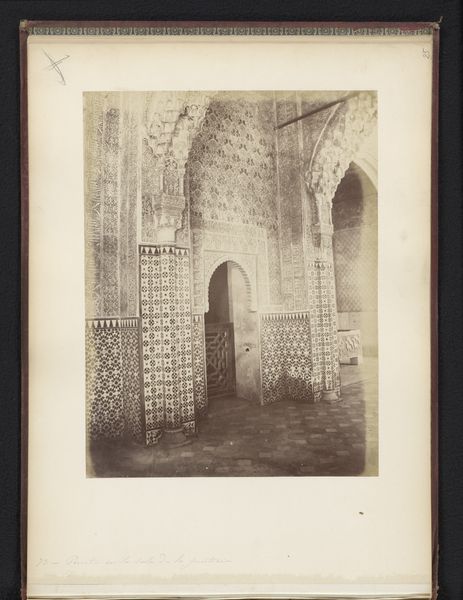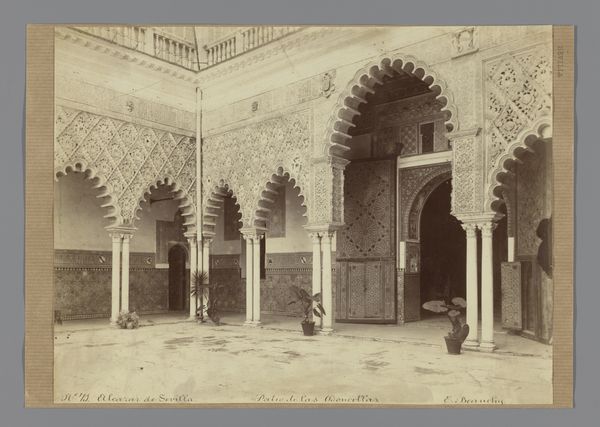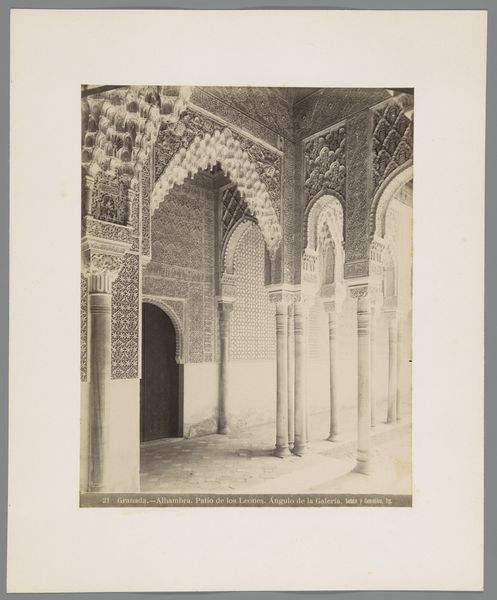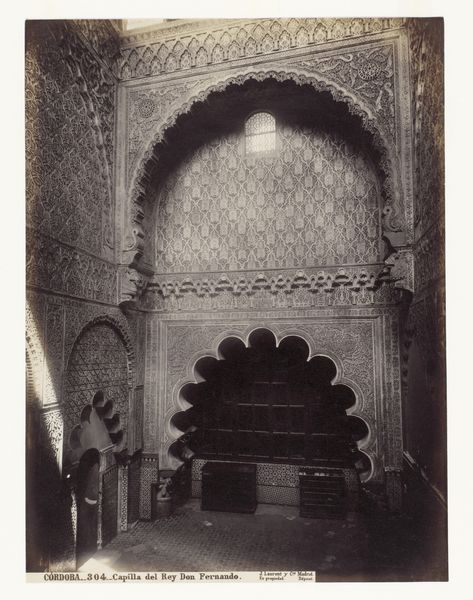
photography, gelatin-silver-print
#
toned paper
#
muted colour palette
#
white palette
#
photography
#
gelatin-silver-print
#
islamic-art
#
tonal art
Dimensions: height 245 mm, width 335 mm, height 317 mm, width 471 mm
Copyright: Rijks Museum: Open Domain
Curator: It feels like stepping into a hushed dream. Muted tones, patterns within patterns... like a riddle whispered in stone. Editor: Indeed. What we have here is Juan Laurent's "Sala de los Divanes, Alhambra, Granada, Spanje," a gelatin silver print capturing a slice of the Alhambra, dating roughly from 1857 to 1890. It's a photograph, but the stillness, almost sepia quality, feels more like an etching of a memory. Curator: Memory...yes. The Alhambra itself is a vessel of layered histories, of Moorish splendor and Christian reconquest. And Laurent captures it not as a booming statement, but a quiet, intimate revelation. It makes you wonder about all those moments that must have unfolded inside. The composition really centers my eye; it's strangely soothing for an architectural image. Editor: Laurent was keenly interested in making images of Spanish heritage sites. This shot demonstrates an imperial gaze, cataloging architectural "treasures" for consumption by European audiences. Photography offered a 'scientific' or documentary way of seeing, further popularized this type of romantic Orientalism. Look at how his printing emphasizes decorative geometries, framing and re-contextualizing the experience of this iconic location. Curator: Re-contextualizing for whom, though? Perhaps the Alhambra felt familiar to Laurent himself, through inherited memory and longing. It's all so exquisitely detailed and yet restrained, in the treatment of light, for example. Does the fact that it was created within the frame of imperialism take something away from this feeling, though? I guess there is no answer to this question. It has it owns time and place. Editor: I agree. We cannot un-know the history surrounding these images, yet neither should we negate the affective power they hold. The popularity of photographic souvenirs like these cemented the Alhambra's place within a global imaginary. Today it calls attention to important issues regarding image appropriation and authenticity within post-colonial discourse. Curator: It feels a little sad and yet also complete. It also captures how much these locations also have survived to the current day. I almost didn’t realize this was a photography, at first, so old and wise is the tonality and aesthetic it employs. It still has relevance in our very modern days, as well. Editor: Laurent's capture serves not just as a document of the past, but also prompts us to reflect on how places and cultures get visualized, commodified and remembered across time and geography. The conversation should be constant and fluid as a running spring.
Comments
No comments
Be the first to comment and join the conversation on the ultimate creative platform.
